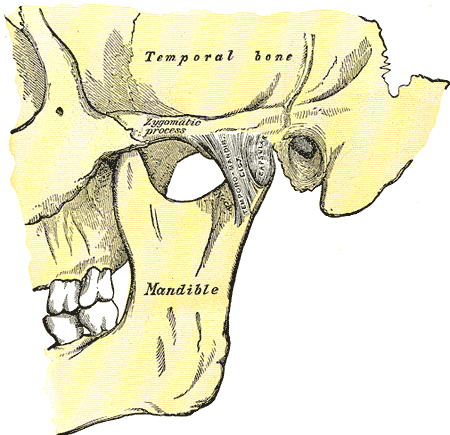If you suffer from a temporomandibular disorder, commonly referred to as TMJ even though that designation actually stands for temprormandibular joint, you know the pain and discomfort it can cause. You’ve probably been scouring the internet, looking for solutions and treatments. As you consider your options, don’t forget to look into some chiropractic care. You might be surprised at the relief it can offer.
What is TMJ?
 TMJ refers to problems associated with the jaw. You might experience pain in the face, jaw, neck and shoulders. This pain can even continue up to your ear area when you chew or open your mouth wide. You might also have a limited range of motion with your jaw and only be able to open it so far. Often, people suffering from TMJ might hear a clicking or popping noise when they use their jaw and sometimes their jaw can even get stuck in one position. As you can see, TMJ problems can have a major impact on your ability to speak, eat, and just live comfortably.
TMJ refers to problems associated with the jaw. You might experience pain in the face, jaw, neck and shoulders. This pain can even continue up to your ear area when you chew or open your mouth wide. You might also have a limited range of motion with your jaw and only be able to open it so far. Often, people suffering from TMJ might hear a clicking or popping noise when they use their jaw and sometimes their jaw can even get stuck in one position. As you can see, TMJ problems can have a major impact on your ability to speak, eat, and just live comfortably. Treatment Options
There are many treatment options when it comes to dealing with TMJ. A lot of these are things you can do on your own at home. For example, you can apply a cold compress to your jaw and face. Follow this with some jaw stretching and strengthening exercises and then finish off with a warm compress. You can also get a guard fitted to your mouth for night use. This will help prevent any teeth grinding and will keep your jaw aligned correctly. If you’re looking for simple ideas, you can avoid chewing gum, focus on keeping your jaw relaxed during the day, and massage the area every evening before bed.
Medical Treatment Options
If you aren’t satisfied with the results you’re getting from home treatments, there are some medical options as well. Your dentist can prescribe muscle relaxants and anti-inflammatory medications. You can also have corrective dental work done to replace missing teeth, correct any alignment issues, or fix a bite problem. Finally, there are also laser treatments available that are intended to relax the jaw and neck area and increase your range of mobility.
Chiropractic Treatment Options
 Another option you might want to research as you consider treatment for you TMJ is chiropractic care. There are several ways that chiropractic care can help alleviate your symptoms. For example, a chiropractor can work to correct your spinal alignment. This can, in turn, restore proper nervous system function which may help alleviate jaw pain. In some cases, your TMJ symptoms might be a result of poor posture or a back problem. By having chiropractic adjustments performed on your neck and back, you might find relief from a lot of your discomfort. Finally, your chiropractor might do some trigger point therapy around the jaw itself and work to relax those muscles. This can go a long way toward relieving your symptoms. When combined with some of the other options described above, chiropractic care can be a very effective treatment for TMJ.
Another option you might want to research as you consider treatment for you TMJ is chiropractic care. There are several ways that chiropractic care can help alleviate your symptoms. For example, a chiropractor can work to correct your spinal alignment. This can, in turn, restore proper nervous system function which may help alleviate jaw pain. In some cases, your TMJ symptoms might be a result of poor posture or a back problem. By having chiropractic adjustments performed on your neck and back, you might find relief from a lot of your discomfort. Finally, your chiropractor might do some trigger point therapy around the jaw itself and work to relax those muscles. This can go a long way toward relieving your symptoms. When combined with some of the other options described above, chiropractic care can be a very effective treatment for TMJ.
